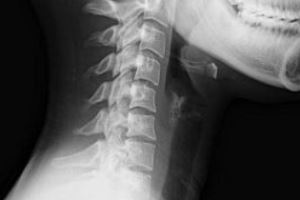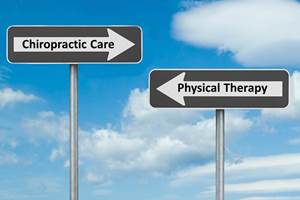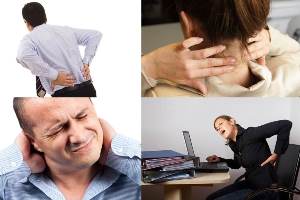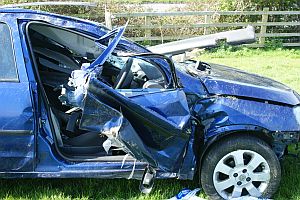What is a “Normal” Pain Tolerance?

Pain is a nearly universal human experience that has several aspects. The first thing we usually think about in relation to pain is its trigger or cause. Perhaps you stub your toe, cut your finger while chopping vegetables, or feel the beginnings of a headache coming on. When this kind of thing happens, your body initiates a physical process driven by your anatomy and physiology. Your senses transmit a message through your nerves to your brain, saying “Something is wrong.” The second aspect of pain, however, is psychological and emotional rather than physical—how do you react to the message that your body is experiencing trouble? Do you ignore the headache and continue with your activities, or do you have to stop what you’re doing and focus on the pain to try to make it go away?
When it comes to our response to pain, two factors are also in operation. These relate to the idea of sensitivity. Pain threshold is the point at which pain first begins to be felt, and pain tolerance is the point at which a person reaches the maximum level of pain they are able to tolerate. When attempting to define what “normal” responses to pain are, both factors must be examined.
“Normal” responses to pain are difficult to determine because they vary so widely.
Some people may react to a bad headache by ignoring it and continuing to work, while others may react to a headache they rate at the same subjective level of pain by becoming completely incapacitated and having to lay down and close their eyes until it goes away. So what factors determine these differences in people’s tolerance of pain, and what can we say about them?
First, there seem to be differences in pain tolerance between men and women, with men exhibiting slightly higher pain tolerance than women. But this generalization can be affected by the oddest things. For example:
- Studies of dental patients suggest that redheads have lower pain tolerances than people with other hair colors, and actually need higher doses of anesthesia during oral surgery.
- Athletes have been proven to have higher pain tolerances than people who don’t exercise.
- People who smoke or are obese are more likely to have low pain tolerances.
- People who are depressed or anxious are more sensitive to pain and have lower tolerances.
There are also biological factors such as genetics, previous spinal cord damage, and chronic diseases that cause nerve damage that affect how we perceive, interpret, and manage pain. So the problem of defining what constitutes a “normal” level of pain tolerance becomes very difficult. But we recognize intuitively that we’re beginning to approach our own pain tolerance when two things happen—first, the pain begins to interfere with our ability to function in some way and second, it causes us to seek help.
As healthcare professionals, we generally distinguish between acute pain—the pain that usually results from a specific injury or illness, lasts less than 6 months and goes away as the body heals—and chronic pain, which can persist or progress over longer periods of time and may have no clear cause.
Depending on the situation, help may come in the form of common over-the-counter analgesics like aspirin, acetaminophen, and ibuprofen, or from more powerful drugs like opioids. Sometimes it may come in the form of ice, heat or topical treatments. And other times it may come in the form of hands-on therapies like chiropractic and massage.
Whatever your level of pain tolerance happens to be, you can get better at handling pain.
Because of the many factors that can potentially affect pain tolerance, managing one’s pain can be a challenging process of trial and error. You can’t change your genetic pain receptors and how sensitive they are, and dying your hair another color if you’re a redhead isn’t going to make you less susceptible to pain. But there are coping mechanisms that can influence the brain’s perception of pain and help you manage it, effectively increasing your pain tolerance. Relaxation techniques, biofeedback, chiropractic manipulation, massage, and mindfulness meditation have all shown surprising success at enabling people who suffer from chronic pain to manage it more effectively without the ongoing use of drugs.
So if you are one of the 25% to 30% of adults living with musculoskeletal pain, contact our office and ask for help—it IS available, and doesn’t necessarily have to come in a pill bottle!

 If you’re suffering from acute or chronic back pain–whether it’s been caused by an injury or some type of medical condition–chances are that you’re more interested in finding relief NOW than learning about the many different types of doctors who are part of the healthcare community. But the simple truth is that different types of doctors tend to approach their work in particular ways because of basic differences in their training and clinical experience. This means that it’s worthwhile for a back pain patient to understand at least a little bit about how a physician’s chosen discipline can influence his or her perspective and priorities when it comes to treatment.
If you’re suffering from acute or chronic back pain–whether it’s been caused by an injury or some type of medical condition–chances are that you’re more interested in finding relief NOW than learning about the many different types of doctors who are part of the healthcare community. But the simple truth is that different types of doctors tend to approach their work in particular ways because of basic differences in their training and clinical experience. This means that it’s worthwhile for a back pain patient to understand at least a little bit about how a physician’s chosen discipline can influence his or her perspective and priorities when it comes to treatment. While it seems like such a commonplace activity, shoveling snow is notorious for being one of the most dangerous things you can do in the winter. The physical exertion it involves, coupled with cold temperatures, can put excessive strain on both your heart and back. Nearly 200,000 Americans were treated in emergency rooms for conditions related to snow shoveling between 1990 and 2006.
While it seems like such a commonplace activity, shoveling snow is notorious for being one of the most dangerous things you can do in the winter. The physical exertion it involves, coupled with cold temperatures, can put excessive strain on both your heart and back. Nearly 200,000 Americans were treated in emergency rooms for conditions related to snow shoveling between 1990 and 2006.



